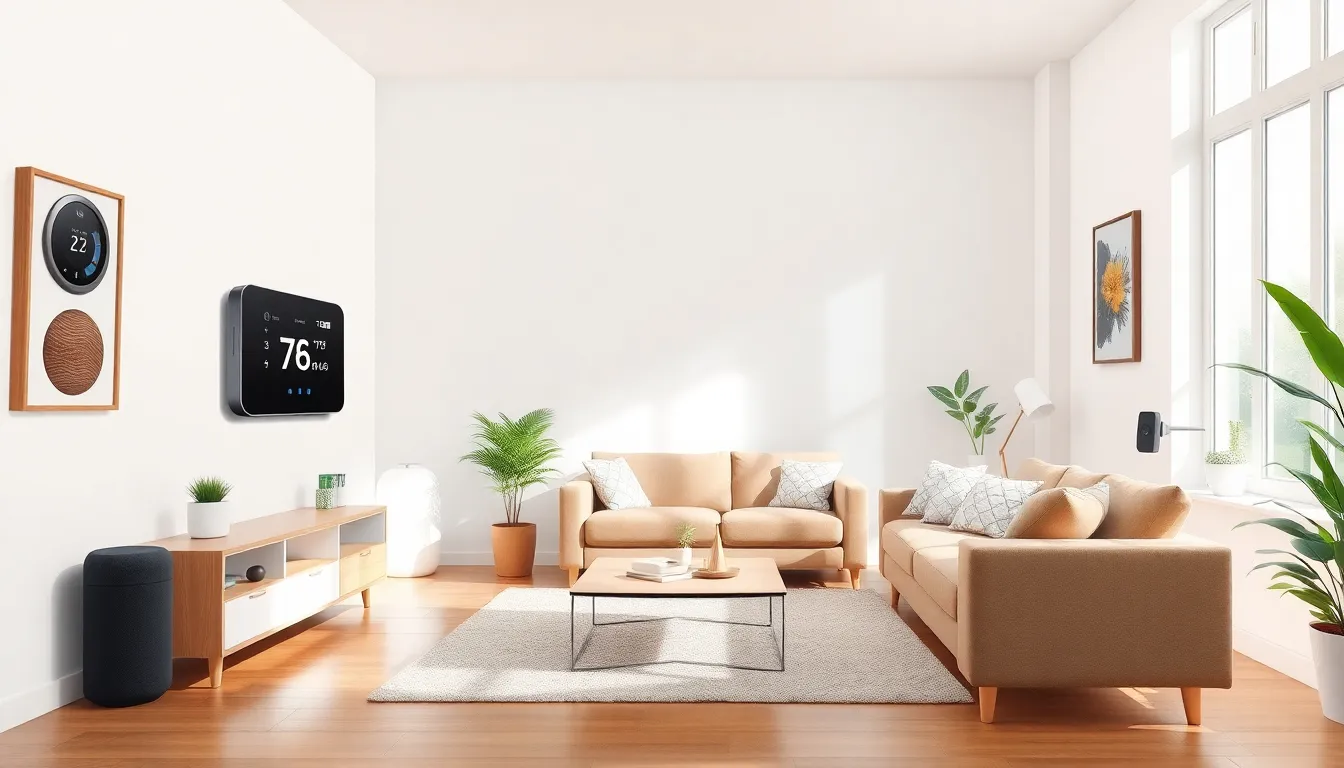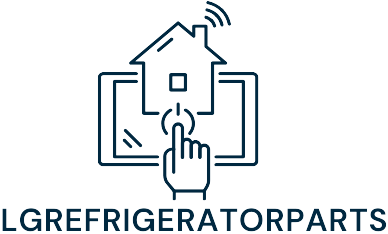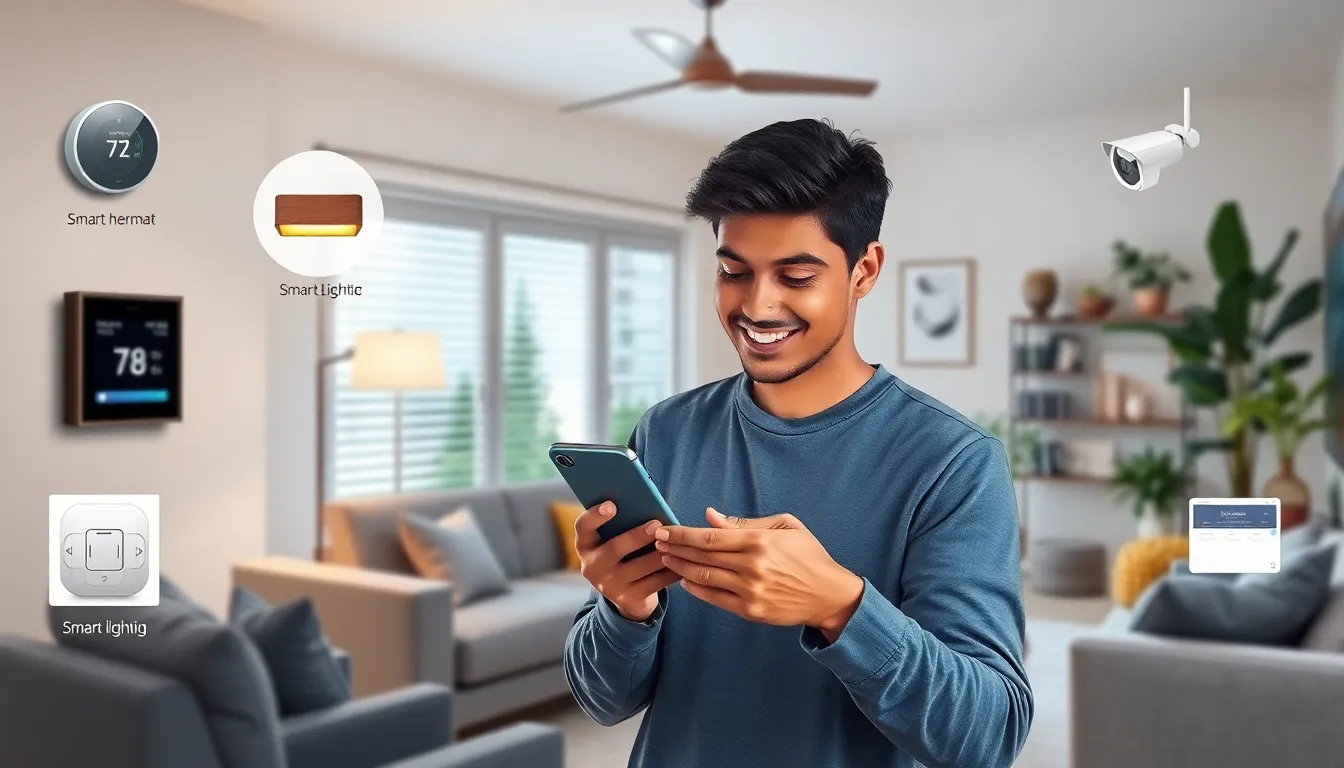Table of Contents
ToggleIn today’s high-tech world, smart home devices are becoming as common as that one sock you can never find. They promise convenience and efficiency, but without proper security, they could also open the door to unwelcome guests—like that nosy neighbor who always seems to know too much.
Securing your smart home isn’t just a tech-savvy move; it’s a necessity. With a few simple steps, you can keep your gadgets safe from hackers and ensure your home remains your personal fortress. So grab your favorite mug of coffee and let’s dive into the world of smart home security. Who knew safeguarding your home could be this fun?
Understanding Smart Home Devices
Smart home devices include a range of products equipped with internet connectivity. These gadgets enhance daily living through automation, efficiency, and convenience.
The Rise of Smart Home Technology
Smart home technology has gained significant traction in recent years. According to Statista, the global smart home market is projected to reach $135.3 billion by 2025. Homeowners embrace these devices for improved comfort and energy management. Products such as smart thermostats, security systems, and lighting controls have surged in popularity. Enhanced connectivity makes it easier for users to manage devices remotely through smartphones or voice assistants. Convenience drives more individuals to invest in smart technologies.
Common Vulnerabilities in Smart Home Devices
Smart home devices often face security challenges. Weak passwords on devices leave them open to unauthorized access. Outdated firmware creates additional risks, as manufacturers release patches to fix vulnerabilities. Many devices lack built-in security features, making them susceptible to attacks. Insecure network settings can expose personal data to third parties. Anonymity of user data complicates security measures further. Prioritizing security during setup helps mitigate these vulnerabilities effectively.
Best Practices for Securing Smart Home Devices

Securing smart home devices requires a proactive approach to prevent unauthorized access. Implementing best practices can significantly enhance home security.
Change Default Passwords
Default passwords often pose a major security risk. Manufacturers usually set weak passwords for convenience, making devices easily exploitable. By changing these passwords to complex combinations of letters, numbers, and symbols, users increase protection against unauthorized access. Regularly updating passwords further strengthens security. Ensure that each device features a unique password to minimize vulnerabilities.
Enable Two-Factor Authentication
Two-factor authentication adds an additional layer of security to smart home devices. This feature requires a second form of verification, such as a text message code or authentication app, alongside the regular password. Enabling it significantly reduces the risk of unauthorized access, even if passwords are compromised. Many popular smart home devices support two-factor authentication, so users should check device settings and activate this feature to enhance security measures effectively.
Regularly Update Device Firmware
Updating device firmware regularly is crucial for maintaining security. Manufacturers frequently release updates to address vulnerabilities and enhance functionality. By checking for updates monthly, users can ensure devices remain protected against the latest threats. Enabling automatic updates is a simple way to ensure devices always operate on the most secure version. Keeping firmware current minimizes the chances of exploitation and enhances overall device performance.
Network Security Measures
Securing the network is essential for protecting smart home devices from unauthorized access. Implementing robust security measures significantly reduces the risk of cyber threats.
Secure Your Wi-Fi Network
Securing the Wi-Fi network is critical. Change the default SSID to something unique to avoid drawing attention. Use WPA3 encryption for stronger protection against intrusions. Regularly updating the router firmware ensures it addresses the latest vulnerabilities. Monitoring connected devices allows for the quick identification of unrecognized access points. Employing a strong, complex password further secures the Wi-Fi network. This password should integrate uppercase and lowercase letters, numbers, and special characters. Strengthening Wi-Fi security forms the first line of defense against potential breaches.
Use a Guest Network for Smart Devices
Setting up a guest network for smart devices adds an additional layer of security. Isolating smart home gadgets from personal computers and mobile phones minimizes exposure to cyber threats. Configuring a separate network prevents unauthorized access to sensitive information. Limiting the guest network to essential devices decreases overall risk. Disabling guest network access when not in use further enhances security. Regularly changing passwords for the guest network helps maintain privacy. Using a guest network ultimately streamlines smart device management while safeguarding the entire home network.
Monitoring and Maintenance
Monitoring and maintaining smart home devices is essential for ensuring ongoing security. Consistent evaluations help identify potential vulnerabilities.
Regular Device Audits
Conducting regular audits on smart devices enhances overall security. Check for unauthorized devices connected to the network regularly. Users should confirm that all connected devices have the latest firmware updates. Maintaining a detailed inventory of devices facilitates tracking changes and potential breaches. Auditing ensures devices are functioning optimally, reducing exposure to cyber threats. Set reminders to perform these audits quarterly to stay proactive.
Using Security Software and Apps
Employing security software and apps strengthens device protection. Many specialized applications offer real-time monitoring of smart devices. These tools alert users to suspicious activities and unauthorized access attempts. Robust antivirus software can also scan connected devices for vulnerabilities. Integrating software solutions with existing smart home systems provides a comprehensive safety layer. Regularly updating security applications ensures they effectively combat emerging threats. Utilizing these resources enhances the overall security posture of smart homes.
Securing smart home devices is essential for protecting personal information and ensuring peace of mind. By implementing best practices like changing default passwords and enabling two-factor authentication, homeowners can significantly reduce their vulnerability to cyber threats. Regularly updating firmware and monitoring network security are also crucial steps in maintaining a secure environment.
As the adoption of smart technology continues to rise, proactive measures become increasingly important. Embracing these security strategies not only enhances the functionality of smart devices but also fosters a safer living space. With the right approach, individuals can enjoy the benefits of smart home technology while minimizing potential risks.



